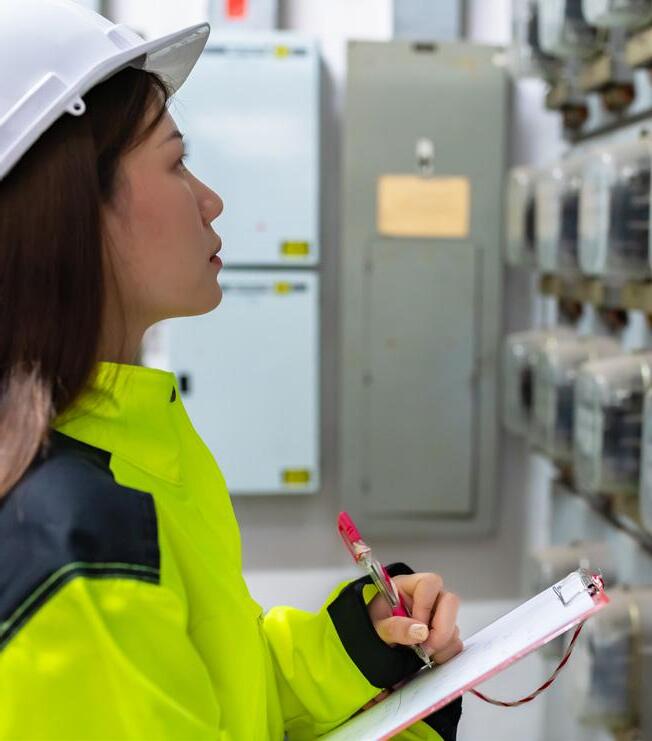BATTERY ENERGY STORAGE
TECHNOLOGIES AND SAFETY STANDARDS ARE CONSTANTLY IMPROVING
Fires that have occurred at lithium-ion battery energy storage system (BESS) facilities in recent years have raised concerns about the safety of BESS projects among decision-makers, the news media, and community members. This fact sheet provides an overview of the key innovations that make today’s battery storage projects less susceptible to fire and that greatly reduce the extent of fires if they do occur.
Industry innovations have significantly improved BESS technology and safety standards.
Evolving Industry Safety Standards
In response to a request from CESA, the National Fire Protection Association (NFPA) published its first BESS standard, NFPA 855, in 2020. The NFPA 855 standard, which is largely adopted in the California Fire Code, is updated every three years. Recently developed facilities have followed either the 2020 standard or the newer NFPA 855 2023 standard. These standards, and improvements in BESS technology and fire detection and suppression systems, have substantially reduced the likelihood of future incidents.
Today all new battery models undergo a testing and certification process that ensures that a failure will not cascade beyond one single battery, even when deliberately set on fire. The UL9540a standard defines the testing protocol for individual and packaged battery products (cells, modules, and whole battery storage units) and Large-Scale Fire Testing (LSFT) protocols for multiple units in close proximity. Earlier generations of BESS products were not required to demonstrate that fires in one battery would not propagate to adjacent units as is standard today.
Competing BESS Project Layout Approaches : Buildings vs Containers
In the 2010s, as the lithium-ion battery energy storage industry was emerging, project developers used one of two competing approaches to developing large-scale BESS facilities for wholesale electricity market participation. The first involved placing racks of energy storage modules in large, warehouse-like buildings. The second involved arranging standardized enclosures, which resemble shipping containers, in outdoor locations. In recent years, the energy storage industry has shifted decisively toward containerized systems. This transition was driven by the cost and manufacturing quality control advantages of enclosure-based BESS. Although lithium-ion building-based systems can be designed to limit the risk of propagation from one rack to another, containerized configurations inherently limit the scope of BESS incidents, as discussed below.
Less than 10% of the approximately 200 utility-scale facilities in California are building-based.
The Battery Storage Industry’s Use of Container-Based Layouts Sharply Limits the Propagation of Fires
Currently, the battery storage industry relies almost exclusively on purpose-built containers. These modular, outdoor systems incorporate the latest technological advancements and safety measures.
Modern containerized battery storage systems are engineered with fire-resistant materials, automated monitoring, and thermal management systems that reduce the potential of a fire and prevent the spread of a thermal event beyond an individual container.
While the energy storage industry cannot guarantee that incidents will never occur, the shift toward containerized project configurations substantially reduces the potential scope of any future incidents. Fires that occur in one container do not propagate to nearby containers, limiting the battery capacity at risk of catching fire to less than 1% of battery capacity destroyed during California’s largest BESS fire.
CESA Safety Recommendations
Containerized systems also facilitate incident management by first responders, who have better visibility into conditions in the BESS and who can focus on cooling adjacent containers to further minimize the risk of propagation.
The energy storage industry actively promotes adopting and enforcing the latest national fire safety standards. CESA, together with our partners at American Clean Power, recommend two actions the state should take to ensure new facilities meet the strictest safety standards.
1. Enforce the Latest Safety Standards for All New Energy Storage Facilities
CESA recommends that state or local jurisdictions require future BESS facilities to comply with the newest versions of NFPA 855 within a year of their publication at the time of permitting. The NFPA 855 Committee publishes a new edition every three years, but under the current code adoption cycle, the new version isn’t incorporated into the California Fire Code until nearly three years later.
2. Prohibit Indoor Configurations for Certain BESS Facilities
CESA recommends that future large-scale BESS facilities using chemistries susceptible to thermal runaway be developed in modular outdoor enclosures, significantly reducing the risk of propagation.
The California Energy Storage Alliance (CESA) is a 501(c)(6) membership-based advocacy group dedicated to promoting the role of energy storage within the electric power sector. With over 70 members, CESA serves as the primary voice of energy storage in California. CESA’s mission is to advocate for energy storage as a vital resource for creating a more affordable, efficient, reliable, safe, and sustainable electric power system for all Californians. For more information visit storagealliance.org.


